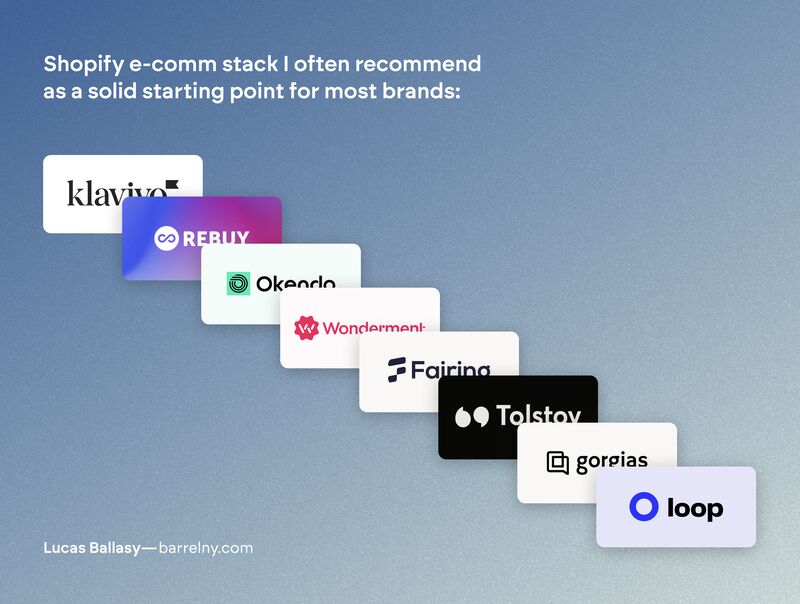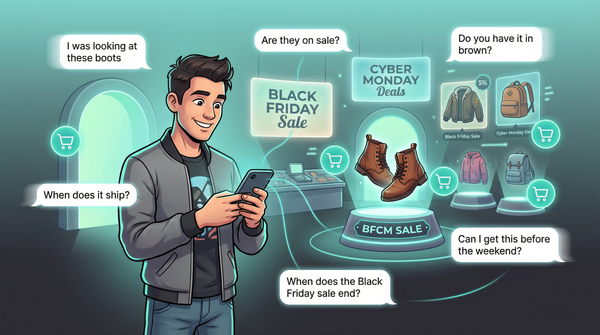Shopify App Overload: When Does Tech Stack Hurt Conversion?

Shopify’s App Store is a candy shop for DTC founders—offering plug-and-play solutions for nearly every site feature imaginable. Pop-ups? Check. Loyalty programs? Got it. Upsell widgets? Just a few clicks away. But this convenience comes with a hidden cost. The average Shopify merchant uses about six apps (Uptek), and ambitious brands often dive into double digits. Imagine this: a recent audit revealed a client with 75 installed apps—over 75% of which were redundant (LinkedIn).

It’s easy to see how: each new app promises a quick fix or edge. But at a certain point, stacking plugins doesn’t just fail to move the needle—it can actively kill your conversion rate.
Slower Sites, Fewer Sales: The Hidden Cost of App Addiction
Today's shoppers are impatient. 53% of mobile visitors will leave if a page takes longer than three seconds to load. By five seconds, 74% are gone (Empathy First Media).

In DTC, those are lost dollars—and lost trust. Studies show each extra second of load time can cost you 5–7% in conversions (Speed Boostr). For context: stretching from a two- to a five-second load could slash your conversion rate by up to 20%.
Even the giants aren’t immune. Amazon infamously found that a mere 100ms slowdown led to a 1% drop in sales (Site Qwality). Shopify's data echoes this: shaving a second off load time can boost mobile conversion rates by up to 27% (Shopify).

And those extra apps? Each adds its own code and server requests.
“Every app you install can potentially slow down your store. Some add milliseconds, others add 3–5 seconds,” warns the Speed Boostr optimization team (Speed Boostr).
That drag on speed quietly chips away at your revenue and search ranking—often before you notice.
More Apps, More Problems: The Hidden Costs Beyond Speed
App bloat isn’t just a site speed issue—it’s a compounding liability for DTC operators. Here’s what you’re really signing up for with every install:
- Code Conflicts & Glitches: Stacking apps increases the odds of JavaScript conflicts or broken elements. One app’s pop-up might battle another’s theme tweak, breaking layouts or disrupting checkout (Wiro Agency). When critical features fail—like add-to-cart—it’s not just a technical issue, it’s lost sales.
- Overloaded User Experience: Too many pop-ups, wheels, and banners can turn your store into a digital arcade. As one agency put it, “if your homepage feels like a casino, users will bounce” (Wiro Agency). Distraction doesn’t convert—it pushes shoppers out the door.
- Subscription Stack Shock: The average paid Shopify app runs $60–$70/month (Meetanshi) (MageComp). Five to ten apps can quietly rack up hundreds in monthly SaaS fees, gutting your margins—often for overlapping tools you barely use.
- Security and Maintenance: Every app is a new piece of external code—and a fresh set of vulnerabilities. Outdated or unvetted apps can open the door to security risks (Wiro Agency). Even after uninstalling, “app cruft” (leftover code) can linger in your theme, weighing down your site (Shopify Community). Unless you’re diligent about cleanup, you’re paying for bloat you can’t even see.
What Happens When You Cut the Bloat? A Real-World Example
Let’s ground this in the trenches. A UK-based DTC homeware brand was running 17 apps. A performance audit found six were barely used and several injected code sitewide—slowing everything down (Wiro Agency). Their mobile site clocked a brutal 6.2 seconds average load time—well into conversion-killer territory.
After purging unused apps and optimizing their theme, mobile load time dropped to 2.1 seconds (Wiro Agency). The result? Add-to-cart rate surged by 28%—almost overnight (Wiro Agency). The lesson: a faster, cleaner stack beats bells-and-whistles every time.
The most resilient DTC brands often run lean, relying on a handful of core apps—for reviews, email, analytics—and leveraging Shopify’s built-in features or bespoke code for the rest. As Lucas Ballasy, an agency founder who’s seen the consequences of unchecked app installs, puts it:
“We once had a client with 75 Shopify apps… needless to say, we removed the majority. It’s a rich ecosystem, but without guidance you don’t know when to stop” (LinkedIn).
Smarter Tech Stacks: The Automation-Human Connection Balance
App minimalism isn’t the same as going back to basics. The best operators ruthlessly audit their stack—keeping what drives revenue, cutting what doesn’t, and seeking out tools that blend automation with an authentic human touch.
Consider abandoned cart recovery. Most brands default to cookie-cutter email or SMS bots. The conversion impact? Meh, at best. But platforms like LiveRecover have reframed the problem. LiveRecover is an SMS cart recovery platform powered by real human agents. When a customer abandons their cart, trained agents personally text the shopper, answer objections, and help close the sale in real time.
The result? Recovery rates that consistently outpace automated flows, precisely because customers feel like they're texting with a person, not a bot. That’s the kind of hybrid approach—automation plus genuine connection—that belongs in a modern operator’s toolkit. It’s not about piling on more apps; it’s about deploying the right ones to maximize both conversion and customer trust.
Founder Takeaway: Audit, Simplify, and Grow
No one’s saying you should torpedo every app—many are mission-critical for marketing, CRO, or ops. But if you want to protect your margins and boost conversions, make regular app audits non-negotiable. Use Shopify’s built-in performance reports or Google PageSpeed Insights after every install. Ask yourself: is this app pulling its weight? Is it redundant? Does Shopify now offer this feature natively?
In the end, customers reward speed and clarity, not feature sprawl. The best DTC operators know: a lean, high-performing tech stack beats a bloated one—every single time.
For more DTC insights, subscribe to the DTC Live.







